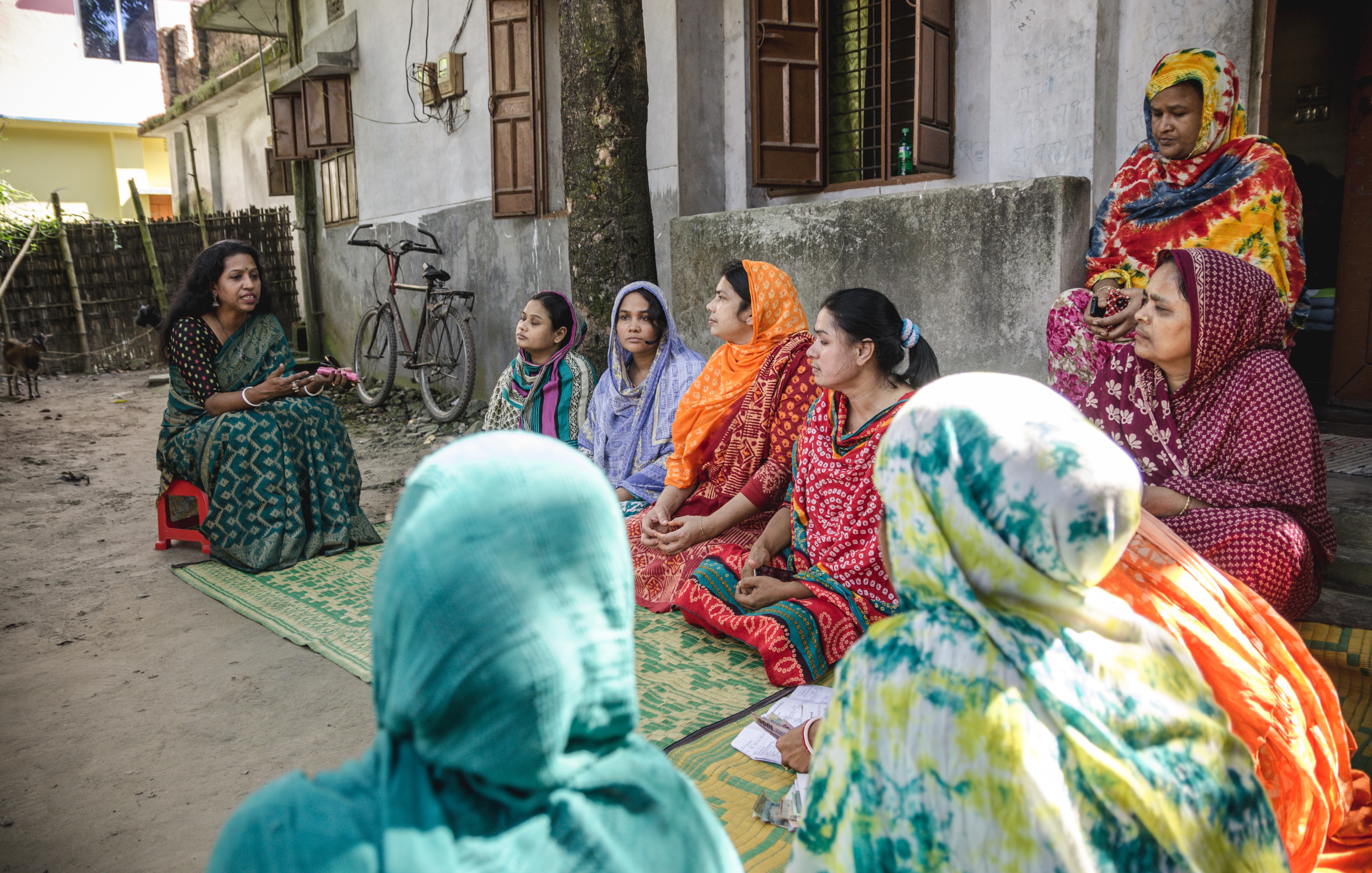Nonviolent Communication Training in South Asia

UN Women/Tasfiq Mahmood
Like elsewhere, the Asia-Pacific region has long had to contend with issues of hate speech, social and religious intolerance, the marginalization of minorities and violent incidents that fuel intolerance and extremism. The COVID-19 pandemic and resulting socioeconomic volatility have further deepened these risks.
Research has shown that although similar categories and types of drivers are found across locations, they are often shaped by local grievances and problems. Contributing factors often relate to issues such as economic exclusion, marginalization and discrimination, poor governance and unresolved conflict. Improving communication between communities and local leaders, including religious leaders, can help to identify, acknowledge and address such factors through peaceful alternatives. Enhancing communication also presents an opportunity to uplift and strengthen the voices of women and other marginalized groups who may not otherwise have been heard.
Harmful gender stereotypes — which are part and parcel of intolerance and extremism — can also be effectively addressed when improving communication among and within groups. Research conducted by UNDP and UN Women confirmed that violent extremist groups often manipulate or build on existing gender stereotypes to promote intolerance and to encourage men and women to find affirmation for such views within their group. Among the study’s conclusions was that building a community’s resilience and capacity to address violent extremism requires a gender-transformative approach that involves both men and women and meaningfully addresses harmful community power structures.
Offering positive messages may not be enough to reduce grievances or to change community attitudes. Further, those who have long been marginalized, including women, may not feel comfortable speaking up or asking for what they need. To overcome these challenges, UNDP and UN Women employed an innovative approach using the ‘non-violent communication’ (NVC) method, which has already found success in international mediation and conflict resolution settings. NVC is also used in workplaces and by individuals to improve communication skills.
A key component of the NVC approach is establishing a nonjudgemental, trusting space that encourages participants to explore their needs and analyse how to meet them. Such a space builds connections and facilitates conflict resolution in ways that serve both individuals and their communities. NVC teaches people how to effectively ask for what they want (a skill that sociocultural norms often downplay in women), how to hear others — even in disagreement — and how to move towards solutions that work for all.
In Bangladesh, the Maldives and Sri Lanka, UNDP and UN Women piloted an NVC training programme to improve communication and social cohesion and to challenge deeply rooted gender stereotypes. Training content ranged from an introduction to NVC concepts to advanced sessions on how to model and share NVC methods with other community members. Sixty-one participants (47 women and 14 men) each completed nine to ten days of training over the course of four months.
An evaluation assessed the trainings’ overall effectiveness, identified potential improvements and outlined best practices for scaling up the programme. The evaluation was based on 144 survey responses (baseline, midline and endline) and qualitative data from semi-structured interviews.
The evaluation found statistically significant shifts in participant attitudes, behaviours and knowledge. The evaluation measured attitudinal shifts towards gender equality and towards more peaceful methods of conflict resolution. For example, the percentage of participants agreeing with the statement, “most men are better suited emotionally for politics and decision-making than are most women” decreased from 46 per cent to 36 per cent. Further, the percentage of participants believing that the only way to defeat violent extremism is with violence decreased from 12 per cent to 2 per cent.
The evaluation also found a behavioural shift in participant responses to anger. The most notable shift was a decrease in the percentage of respondents who said that they beat a dependent (e.g. a spouse or child) when angry; this percentage fell from 22 per cent to 12 per cent. The percentage of those saying they are able to sit with a person they are angry with and discuss the issue increased from 65 per cent to 76 per cent. The evaluation found that training outcomes were consistent across country contexts and genders overall.
Qualitative results patterns showed participants experienced improvements in understanding and communicating their needs, increasing their confidence, better managing anger, and improving their listening skills.
The NVC training exemplified practical methods for promoting social cohesion and common understanding. Employing the NVC method more widely in social cohesion and peacebuilding initiatives would result in gains towards gender equality and more peaceful communities. UNDP and UN Women are committed to continuing to work towards these objectives in the Asia-Pacific Region.

 Locations
Locations